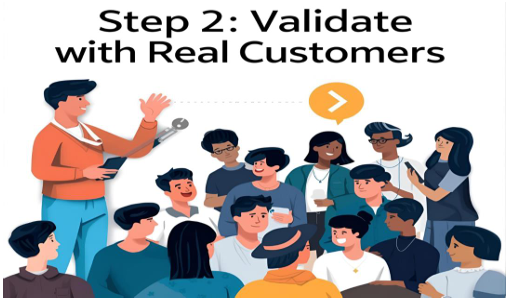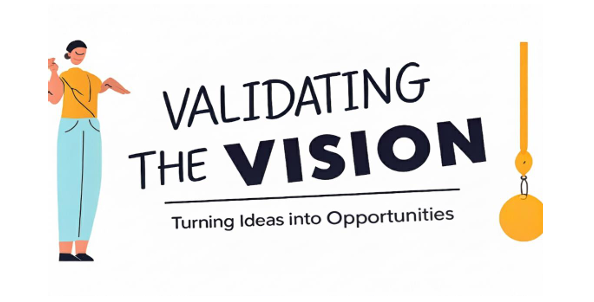Every successful startup begins with a spark, an idea that promises to solve a real-world problem. But an idea alone is never enough. The difference between a daydream and a startup that changes the world lies in one crucial step: validation. Before investing time, money and energy, you must test whether your vision has real potential.
This stage is where your entrepreneurial journey moves from intuition to insight & transforming raw ideas into actionable opportunities.
1. Why Validation Matters

Many startups fail not because the founder’s lacked passion but because they built something nobody truly wanted. Validation ensures that your idea aligns with real customer needs and market demand. It helps answer key questions like:
- Who are my target customers?
- What problem am I solving for them?
- Are they willing to pay for my solution?
Skipping this step is like setting sail without a compass you might move fast, but not in the right direction.
Step 1: Conduct Market Research
Start by studying your market landscape.

- The size of your target market
- Current competitors and their offerings
- Customer pain points and unmet needs
- Google Trends to check interest in your problem area
- Industry reports for insights on demand and competition
- Online communities and forums (like Reddit or Quora) to understand what users are discussing
Market research gives you a factual foundation to ensuring your idea is not just exciting, but relevant.
Step 2: Validate with Real Customers
Once you know the market, it’s time to talk directly to potential users. Real validation comes from conversations, not assumptions.

- Interview 5-10 potential customers to understand their needs and frustrations
- Run short surveys using tools like Google Forms.
- Test early reactions through social media polls or focus groups
Look for recurring patterns if multiple people mention the same problem or express interest in your solution, you’re on the right path.
Step 3: Build a Minimum Viable Product (MVP)
An MVP is the simplest version of your product that allows you to test your assumptions. It’s not about perfection, it’s about learning quickly.
Your MVP could be :- A basic prototype
- A landing page explaining your idea
- A demo video
The goal is to gather feedback before you build the full solution.
Case Study: Zappos - Validating Before Building
Before launching his online shoe store, Nick Swinmurn, founder of Zappos, didn’t build a massive inventory or complex website. Instead, he tested his idea by taking photos of shoes from local stores and posting them online. When customers placed orders, he simply bought the shoes and shipped them.
This simple MVP proved there was real demand for buying shoes online and Zappos later became a billion-dollar company.

The lesson? Start small, learn fast and build what customers truly want.
Step 4: Learn and Iterate

Validation is not a one-time step. Use the feedback you collect to refine your product, target audience, and business model. Each iteration brings you closer to a market-ready solution.
This week, take your idea and talk to 5 people who could be potential users. Listen deeply to their problems, preferences, and expectations. You’ll be surprised how much clarity comes from real conversations.
Remember - great startups aren’t built on assumptions, they’re built on validated insights.



